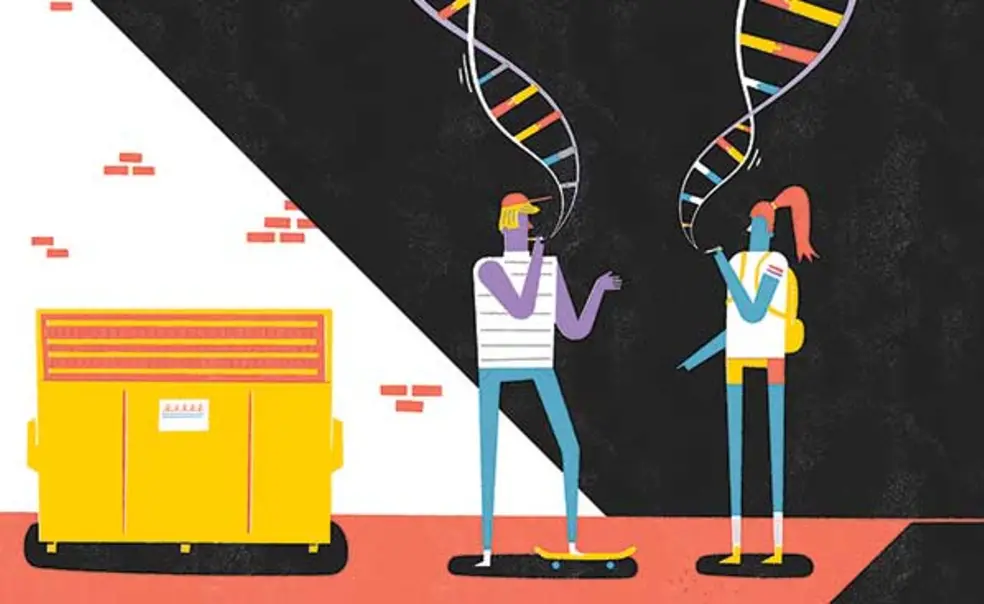Sociology: You Are Who You Know
Who we become and why is more complicated than nature versus nurture
Scientific debate often focuses on whether “nature” (taken to mean genetic inheritance), or “nurture” (parenting, schooling, and other aspects of our environment) has more influence on who we become. But a study by Princeton researchers on genetics and smoking shows that the two concepts are not as distinct as we may believe. In fact, other people’s genes — their nature — form an integral part of our own nurture.
The study shows that a teenager’s likelihood of smoking is influenced by the genes of their classmates, says Ramina Sotoudeh, a sociology Ph.D. student who led the study. Nature and nurture are “not separable,” she says. “They’re not distinguishable from one another.”
Research has shown that genes shape how we react to our environment, and that our environments, including the culture and politics around things like mating and migration, shape how our genes are mixed in the first place. But, this study, says Sotoudeh, considers “how genes make up the environment.”
This so-called “metagenomic” or indirect genetic effect, has long been known in animals, but the first such effect was measured in humans two years ago, when researchers in Iceland found correlations between the genes that parents didn’t pass to their children and those children’s school performance.

If the effects were observed only within friend groups, it could have been chalked up to smokers befriending smokers, says Sotoudeh, but seeing these correlations within essentially randomized grade cohorts suggests that genes do indeed play a role.
As for how one teen’s genes can influence another to smoke, Sotoudeh says there’s “suggestive evidence,” but no certainty, that it’s the “contagious” act of “smoking itself,” rather than some other behavioral influence.
Next, Sotoudeh hopes to explore in depth “the complex ways these effects unfold at the individual level,” but says that finding indirect genetic effects in schools means that scientists should be looking at many ways genes contribute to our environment in other facets of life, too. “It’s part of the reality that we live in.”












1 Response
Norman Ravitch *62
5 Years AgoFree Will vs. Determinism
It appears that the conflicting importance of Nature vs. Nurture recapitulates the old problem of Free Will versus Determinism. Sociology is then a branch of theology, or vice versa. Not the first time old problems reemerge as new problems and old dilemmas remain dilemmas despite all the advances we think we have made over the centuries. This is the best justification for reading the ancient classics: They remain contemporary nevertheless. Has anyone really outpaced Plato or the Vedic writings?